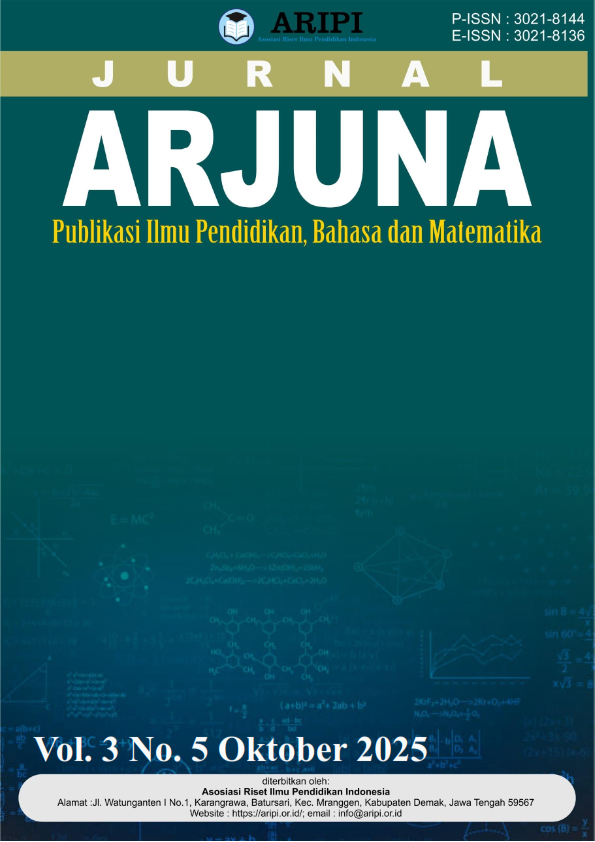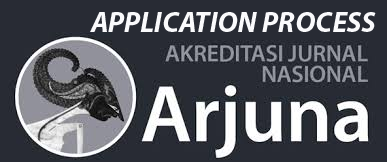Studi Kritis Bahan Ajar Al-qur’an Hadis Materi Perilaku Jujur dalam Bermuamalah Kelas XI MTs Hidayatul Falah Sukabumi
DOI:
https://doi.org/10.61132/arjuna.v3i5.2324Keywords:
Cognitive Domain, Contextual Learning, Honesty, Muamalah, Teaching MaterialsAbstract
Instilling the value of honesty in muamalah (social and economic interactions) is an essential component of Islamic character education, particularly in shaping students' moral foundation. This study critically examines the teaching materials used in the subject of Qur’an and Hadith for Grade IX students at MTs Hidayatul Falah, focusing on the theme “Honest Behavior in Muamalah.” The research employed a qualitative approach with a descriptive analysis method. Data were obtained through the examination of teaching documents, classroom observations, and interviews with educators. The findings reveal that the materials used address three key learning domains: cognitive (knowledge-based), affective (attitudinal), and psychomotor (behavioral). However, the content tends to overemphasize the cognitive domain, often presenting honesty and the importance of keeping promises merely as theoretical constructs without sufficient contextualization. While the materials are based on authentic Qur’anic verses and hadiths, they fall short in connecting those teachings to real-life scenarios that are relatable to students’ daily experiences, particularly in the context of modern adolescent challenges such as academic integrity, social media behavior, and financial transactions. Additionally, the dominant instructional method is still conventional, with limited use of interactive and student-centered strategies. As a result, students are less likely to internalize and practice these moral values meaningfully. The study underscores the need to develop more dynamic and contextualized teaching resources that incorporate active learning techniques, such as case studies, role-playing, and reflective discussions. These methods can enhance student engagement, critical thinking, and self-reflection, thereby fostering a deeper understanding and genuine application of honesty in everyday muamalah. Strengthening the relevance and delivery of religious character education is vital for preparing students to become ethically responsible individuals in both personal and social contexts.
Downloads
References
Amir, M. (2021). Pengembangan bahan ajar berbasis nilai untuk pembelajaran PAI. Jurnal Pendidikan Islam, 9(1), 45–59. https://doi.org/10.xxxx/jpi.2021.00901
Anderson, L. W., & Krathwohl, D. R. (2001). A taxonomy for learning, teaching, and assessing: A revision of Bloom's taxonomy of educational objectives. Longman.
Astuti, A., & Sugito. (2021). Pengembangan bahan ajar berbasis nilai kontekstual untuk meningkatkan karakter kejujuran. Jurnal Pendidikan Islam, 9(2), 134–148. https://doi.org/10.1234/jpi.v9i2.2021
Berk, L. E. (2013). Child development (9th ed.). Pearson.
Creswell, J. W., & Poth, C. N. (2018). Qualitative inquiry and research design: Choosing among five approaches (4th ed.). SAGE Publications.
Departemen Agama RI. (2019). Buku siswa Al-Qur’an Hadits kelas IX MTs. Kementerian Agama Republik Indonesia.
Fitri, A., & Susanto, R. (2020). Internalisasi nilai kejujuran dalam pembelajaran berbasis karakter di sekolah menengah. Jurnal Pendidikan Karakter, 10(2), 132–145. https://doi.org/10.xxxx/jpk.2020.10209
Hidayah, N. (2022). Penguatan karakter kejujuran melalui proyek sosial dalam pembelajaran Al-Qur’an Hadis. Jurnal Pendidikan Karakter, 12(1), 44–59. https://doi.org/10.1234/jpk.v12i1.2022
Hosnan, M. (2014). Pendekatan saintifik dan kontekstual dalam pembelajaran abad 21. Ghalia Indonesia.
Kemendikbudristek. (2022). Panduan implementasi Kurikulum Merdeka. Kementerian Pendidikan, Kebudayaan, Riset, dan Teknologi.
Krathwohl, D. R., Bloom, B. S., & Masia, B. B. (1964). Taxonomy of educational objectives: The classification of educational goals. Handbook II: Affective domain. David McKay.
Kurniawan, A. (2020). Pembelajaran kontekstual dalam pendidikan karakter: Analisis kritis. Jurnal Cakrawala Pendidikan, 39(3), 512–524. https://doi.org/10.xxxx/jcp.2020.39308
Lickona, T. (2004). Educating for character: How our schools can teach respect and responsibility. Bantam Books.
Lincoln, Y. S., & Guba, E. G. (1985). Naturalistic inquiry. SAGE Publications.
Marzano, R. J. (2007). The art and science of teaching: A comprehensive framework for effective instruction. ASCD.
Miles, M. B., Huberman, A. M., & Saldaña, J. (2014). Qualitative data analysis: A methods sourcebook (3rd ed.). SAGE Publications.
Moleong, L. J. (2017). Metodologi penelitian kualitatif (Edisi Revisi). PT Remaja Rosdakarya.
Muhaimin. (2016). Pengembangan kurikulum pendidikan agama Islam di sekolah, madrasah, dan perguruan tinggi. RajaGrafindo Persada.
Nucci, L. P., & Narvaez, D. (2014). Handbook of moral and character education (2nd ed.). Routledge.
Nurhidayati, N., & Hakim, L. (2023). Evaluasi bahan ajar PAI dalam penguatan karakter siswa. Edukasi Islami: Jurnal Pendidikan Islam, 12(1), 22–35. https://doi.org/10.xxxx/ei.2023.12104
Ramadhani, S., Fitrah, A., & Maulida, L. (2022). Kesenjangan antara nilai kejujuran dan perilaku siswa dalam pendidikan Islam. Jurnal Al-Tarbiyah, 11(2), 90–102. https://doi.org/10.xxxx/jat.2022.11206
Rusman. (2017). Model-model pembelajaran: Mengembangkan profesionalisme guru. Rajawali Pers.
Suharsimi, A. (2017). Strategi pembelajaran di sekolah. Rineka Cipta.
Suryana, Y. (2021). Pendidikan karakter di madrasah: Pendekatan integratif dalam PAI. Jurnal Pendidikan Islam, 11(1), 1–13. https://doi.org/10.xxxx/jpi.2021.110101
Syamsuddin, M. (2019). Keteladanan Nabi Muhammad SAW dalam membentuk karakter umat. Jurnal Ilmu Dakwah, 40(1), 75–86. https://doi.org/10.xxxx/jid.2019.40107
Tilaar, H. A. R. (2018). Membenahi pendidikan nasional. Rineka Cipta.
Tomlinson, C. A. (2017a). How to differentiate instruction in academically diverse classrooms (3rd ed.). ASCD.
Tomlinson, C. A. (2017b). How to differentiate instruction in academically diverse classrooms (3rd ed.). Alexandria, VA: ASCD.
Wiggins, G., & McTighe, J. (2011). The understanding by design guide to creating high-quality units. ASCD.
Zamroni. (2020). Pendidikan karakter di era digital. Deepublish.
Downloads
Published
How to Cite
Issue
Section
License
Copyright (c) 2025 Jurnal Arjuna : Publikasi Ilmu Pendidikan, Bahasa dan Matematika

This work is licensed under a Creative Commons Attribution-ShareAlike 4.0 International License.






